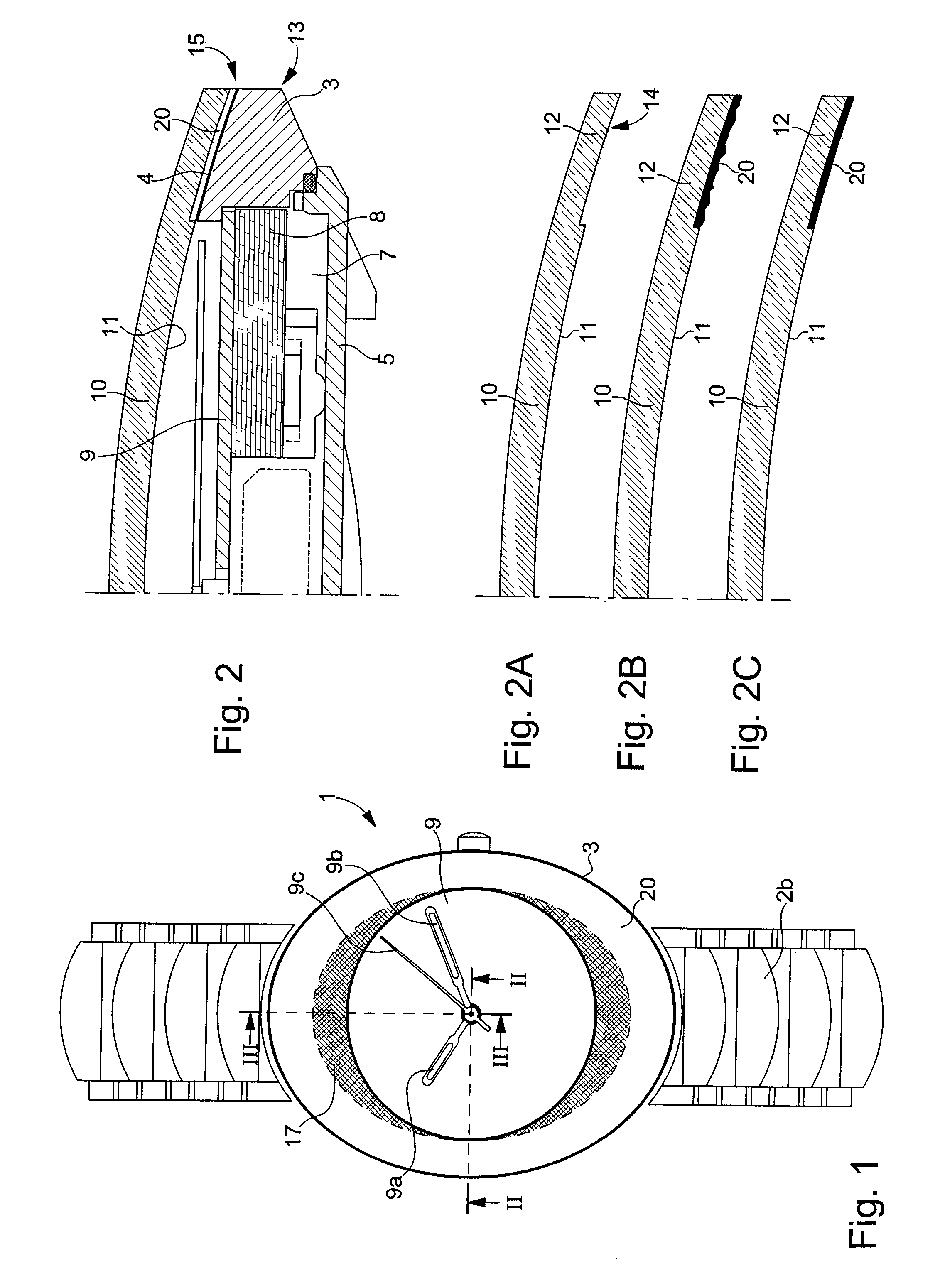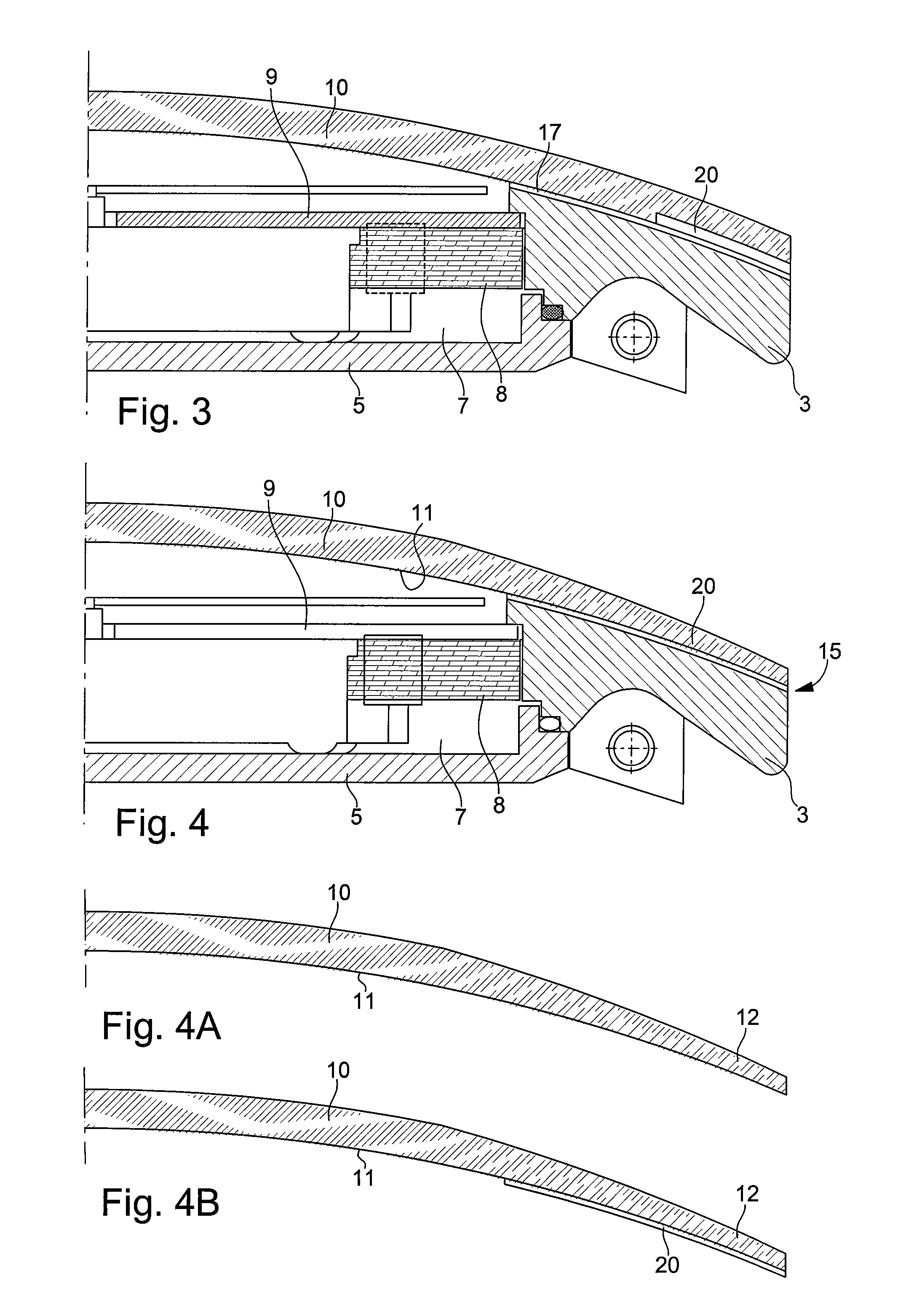Case closed by a glass with an invisible joint or one that can be decorated and manufacturing methods
a technology of glass and invisible joints, applied in the field of sealed cases, can solve the problems of limited color choices for the case or its external parts, inability to find aesthetically appropriate metallizing, and inability to provide matte non-metallic hues
- Summary
- Abstract
- Description
- Claims
- Application Information
AI Technical Summary
Benefits of technology
Problems solved by technology
Method used
Image
Examples
first embodiment
[0024]Referring first of all to FIGS. 1, 2 and 2A to 2C, a first embodiment according to a first method will be described hereinafter.
[0025]The wristwatch shown in FIGS. 1 and 2 includes in a known manner a case 1 formed of a middle part 3, closed in its lower part by a back cover 5, and in its higher part by a glass 10 delimiting a sealed compartment 7. Compartment 7 houses a watch movement 8 for displaying time data on a dial 9. In the example shown, the display is an analogue display by means on hour hand 9a, a minute hand 9b and a second hand 9c.
[0026]As can be seen in FIG. 2, middle part 3 defines an outer edge 13 of the case 1 and the shoulder 4, and glass 10 extends to the outer edge 13. Glass 10 entirely covers shoulder 4 of middle part 3 to which it is bonded or welded at joint zones 15 formed by an enamel deposition 20 formed on inner face 11 of glass 10 at its external edge 12, in this example covering all of shoulder 4 of middle part 3. The hue visible to an observer th...
second embodiment
[0033]Referring now to FIGS. 4, 4A and 4B, a second embodiment will be described in accordance with a second method more particularly suited to a glass 10 whose external edge 12 is thin and in which a hollow cannot be machined. The addition of enamel 20 in joint zone 15 on inner face 11 of glass 10 can be carried out by a direct structured deposition, as shown in FIGS. 4A and 4B. The deposition of the enamel powder can be carried out by conventional pad or screen printing techniques, in several steps with firing after each step, until the desired thickness is obtained, comprised for example between 0.1 and 0.5 mm. The glass is assembled on the middle part as previously by applying a film of adhesive on shoulder 4 of middle part 3, or by welding.
[0034]When the glass used is made of sapphire, it is also possible to carry out structuration by chemical means via photolithographic means of the type used for manufacturing MEMS on a glass substrate. The method, schematised in FIGS. 5A to 5...
PUM
 Login to View More
Login to View More Abstract
Description
Claims
Application Information
 Login to View More
Login to View More - R&D
- Intellectual Property
- Life Sciences
- Materials
- Tech Scout
- Unparalleled Data Quality
- Higher Quality Content
- 60% Fewer Hallucinations
Browse by: Latest US Patents, China's latest patents, Technical Efficacy Thesaurus, Application Domain, Technology Topic, Popular Technical Reports.
© 2025 PatSnap. All rights reserved.Legal|Privacy policy|Modern Slavery Act Transparency Statement|Sitemap|About US| Contact US: help@patsnap.com



